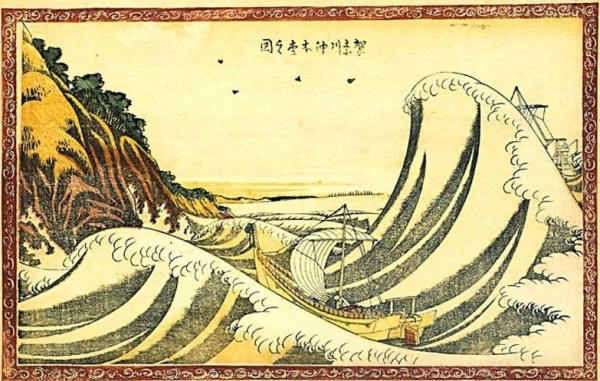Facts About The Great Wave off Kanagawa
"The Great Wave off Kanagawa" created by Japanese artist Hokusai between 1829 and 1833 during the late Edo period, stands as one of the world's most celebrated woodblock prints. As part of his series "Thirty-six Views of Mount Fuji" this iconic piece depicts a colossal wave threatening boats near Kanagawa, with the tranquil Mount Fuji in the background. While many perceive the scene as a tsunami, it is more likely a representation of a rogue wave. Hokusai's use of Berlin blue pigment in this series is particularly remarkable.
Hokusai embarked on his artistic journey at an early age and gained widespread acclaim, particularly with the publication of "Thirty-six Views of Mount Fuji." "The Great Wave" drew inspiration from Hokusai's earlier works and those of other artists, showcasing his development in skill and technique over time.
The print's composition is rich with intricate details: the turbulent sea, the resilient boats, and the distant Mount Fuji. Hokusai's signature and inscriptions further enhance the piece's charm, highlighting his meticulous attention to detail and distinctive style. Creating this masterpiece involved traditional Japanese woodblock printing techniques, a collaborative process requiring precision and teamwork.
"The Great Wave" has profoundly impacted art and culture, becoming a globally recognized symbol. The influence of Japanese art on Western culture, known as Japonism, is clearly evident. Artists like Vincent van Gogh and Claude Debussy found inspiration in Hokusai's works. The print has inspired countless pieces of art, literature, music, and even commercial products, underscoring its enduring popularity and significance.
The print's legacy continues to thrive, with documentaries and references in popular culture, including films and various merchandise, emphasizing its lasting appeal and widespread recognition.

 Ireland
Ireland